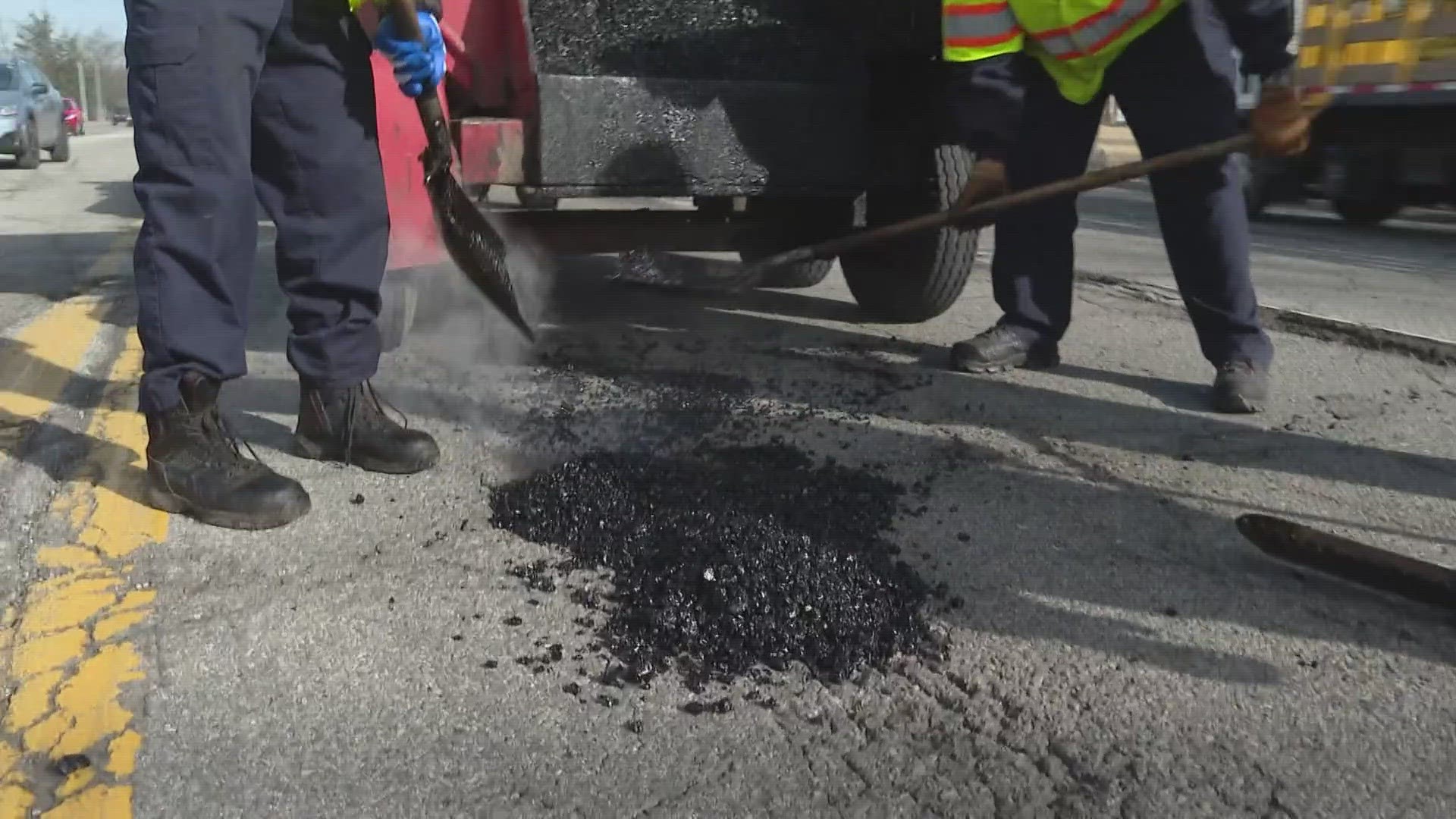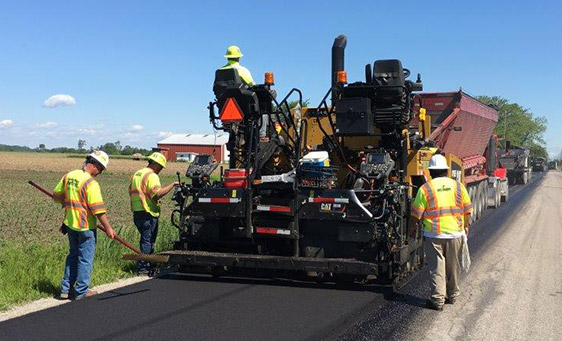Boost the Look of Your Property with Expert Commercial Parking Lot Paving
Boost the Look of Your Property with Expert Commercial Parking Lot Paving
Blog Article
Unlocking the Keys of Warm Mix Asphalt Innovation
Discovering the midsts of hot mix asphalt innovation reveals a world where careful procedures and precise solutions merge to shape our roads and framework. The combination of accumulations, binders, and fillers isn't simply a construction job but a strategic orchestration of durability and performance.
Significance of Warm Mix Asphalt
Hot Mix Asphalt plays a vital function in modern facilities development because of its resilience and cost-effectiveness. As the most commonly utilized leading product for roadways, freeways, and car park, Warm Mix Asphalt uses a series of advantages that add to its relevance in building and construction tasks. One crucial advantage is its capability to endure rush hour loads and severe weather conditions, supplying a lasting and dependable surface area for transport networks. Furthermore, Warm Mix Asphalt is cost-effective in both first building and long-term maintenance, making it a favored selection for several infrastructure projects.
The sturdiness of Warm Mix Asphalt stems from its composition, which consists of aggregates, binder, and filler materials that are carefully chosen and blended to meet details efficiency requirements. Generally, the value of Warm Mix Asphalt in infrastructure growth can not be underrated, as it proceeds to be a foundation of modern-day building methods.
Components of Asphalt Mixes
The structure of asphalt mixes includes thoroughly picked accumulations, binder, and filler materials that are crucial for accomplishing particular efficiency demands. Accumulations are the main component of asphalt mixes, giving toughness and stability. These accumulations can be natural, such as crushed rock or smashed rock, or synthetic, like recycled materials from old sidewalks. The binder, commonly asphalt or asphalt concrete, holds the accumulations with each other and supplies versatility and resilience to the mix. The selection of the binder is critical as it straight influences the mix's efficiency in different climate condition. Fillers, such as moisturized lime or Portland concrete, are utilized to boost the mix's workability and aging resistance. Angled Parking.
The combination and proportion of these components play a significant role in figuring out the quality and efficiency of the asphalt mix. Engineers meticulously develop the mix to fulfill details demands, taking into consideration factors like web traffic volume, environment conditions, and sidewalk lifespan. Appropriate option and harmonizing of accumulations, binder, and fillers are necessary for creating resilient, durable asphalt pavements.
Mixing and Production Methods

Once the aggregates are picked, the binder, often asphalt cement, is included to bind the materials with each other. The binder's quality and amount dramatically affect the mix's strength, resistance, and adaptability to ecological variables. Furthermore, fillers like moisturized lime or Portland cement may be incorporated to boost particular characteristics of the asphalt mix, such as its workability or moisture resistance.
Throughout manufacturing, the aggregates and binder are heated up, generally between 250-325 ° F(121-163 ° C ), to facilitate blending and ensure appropriate coating of the accumulations. The mixing procedure should be extensive to achieve a homogeneous blend that promotes the desired performance characteristics of the asphalt. Various methods, such as batch blending or drum blending, are employed to achieve high-quality and consistent asphalt mixes for construction projects.
Variables Impacting Asphalt Efficiency
Elements influencing asphalt efficiency include a series of variables that impact the longevity, long life, and total top quality of asphalt pavements. One vital element is the quality of materials utilized in the asphalt mix. The type and source of accumulations, the binder top quality, and the ingredients all play a considerable function in determining the performance of the asphalt pavement. The rank of aggregates is vital as it affects the mix's resistance, workability, and stability to breaking and rutting.

Environmental problems additionally influence asphalt efficiency. Temperature variants, wetness infiltration, and web traffic loads can all impact the structural stability of the pavement. Design factors to consider, such as sidewalk thickness and drain, are crucial in making certain the long-lasting efficiency of the asphalt sidewalk. By thoroughly taking into consideration these designers, variables and service providers can optimize asphalt performance and improve the life span of sidewalks.
Lasting Practices in Asphalt Modern Technology

WMA permits for the production and positioning of asphalt blends at reduced temperature levels contrasted to typical hot-mix asphalt, resulting in minimized power consumption and greenhouse gas emissions. The usage of permeable asphalt blends can assist mitigate stormwater overflow issues by allowing water to infiltrate via the pavement and right into the ground, advertising natural water purification and recharge processes.
Final Thought
In conclusion, warm mix asphalt innovation plays an essential duty in modern-day infrastructure development due to its sturdiness and cost-effectiveness. By thoroughly balancing parts, utilizing proper mixing strategies, and considering numerous elements, designers can produce top notch asphalt blends that withstand rush hour lots and severe weather condition problems. Welcoming lasting methods, such as using recycled products and warm-mix technologies, even more enhances the ecological friendliness of asphalt technology.
Mixing and production strategies in warm mix asphalt innovation entail the specific combination and processing of accumulations, binder, and fillers to develop a high-performance and sturdy asphalt mix.Variables influencing asphalt performance include an array of variables that influence the sturdiness, longevity, and total top quality of asphalt pavements. Lasting practices in asphalt innovation incorporate different initiatives intended at reducing the ecological influence of asphalt production and paving procedures. By integrating recovered asphalt pavement (RAP) and recycled asphalt shingles (RAS) right into new asphalt blends, the industry can significantly decrease the usage of raw materials and energy, while likewise lowering landfill waste.
WMA permits for the production and positioning of asphalt mixes at lower temperatures contrasted to conventional hot-mix asphalt, resulting in lowered energy usage and greenhouse gas emissions.
Report this page